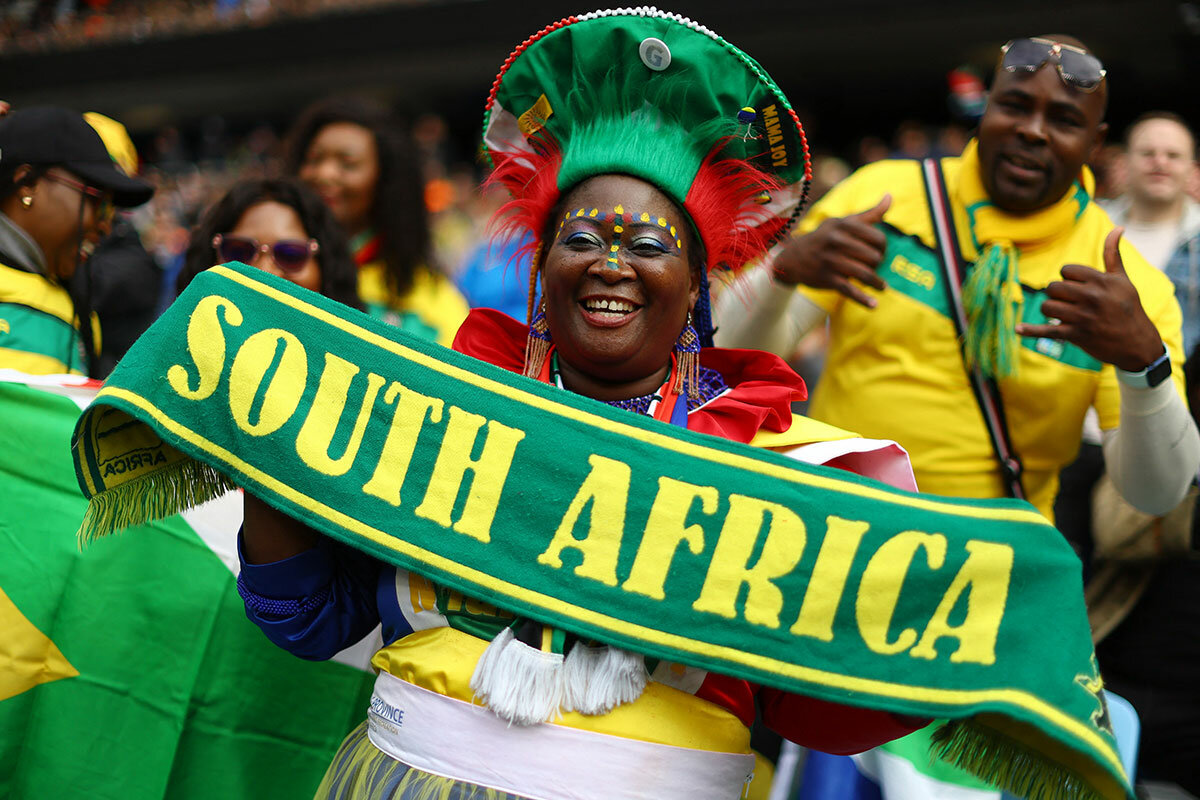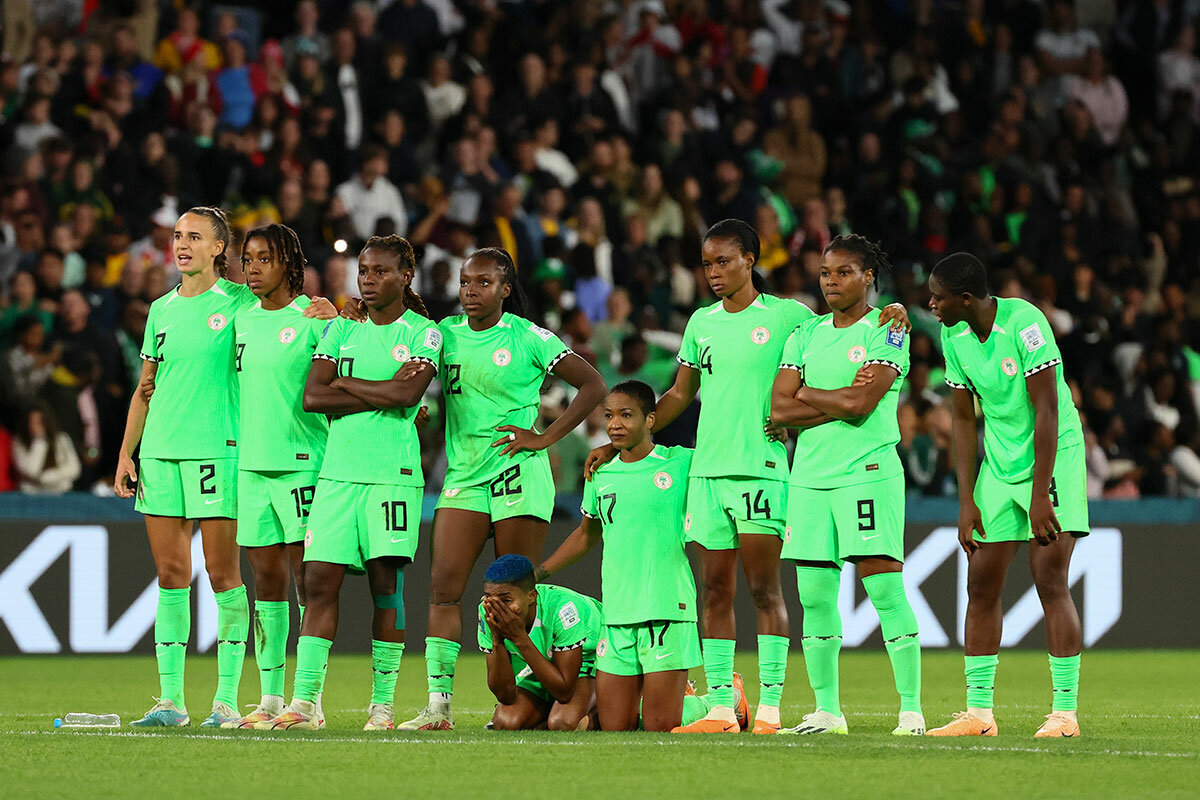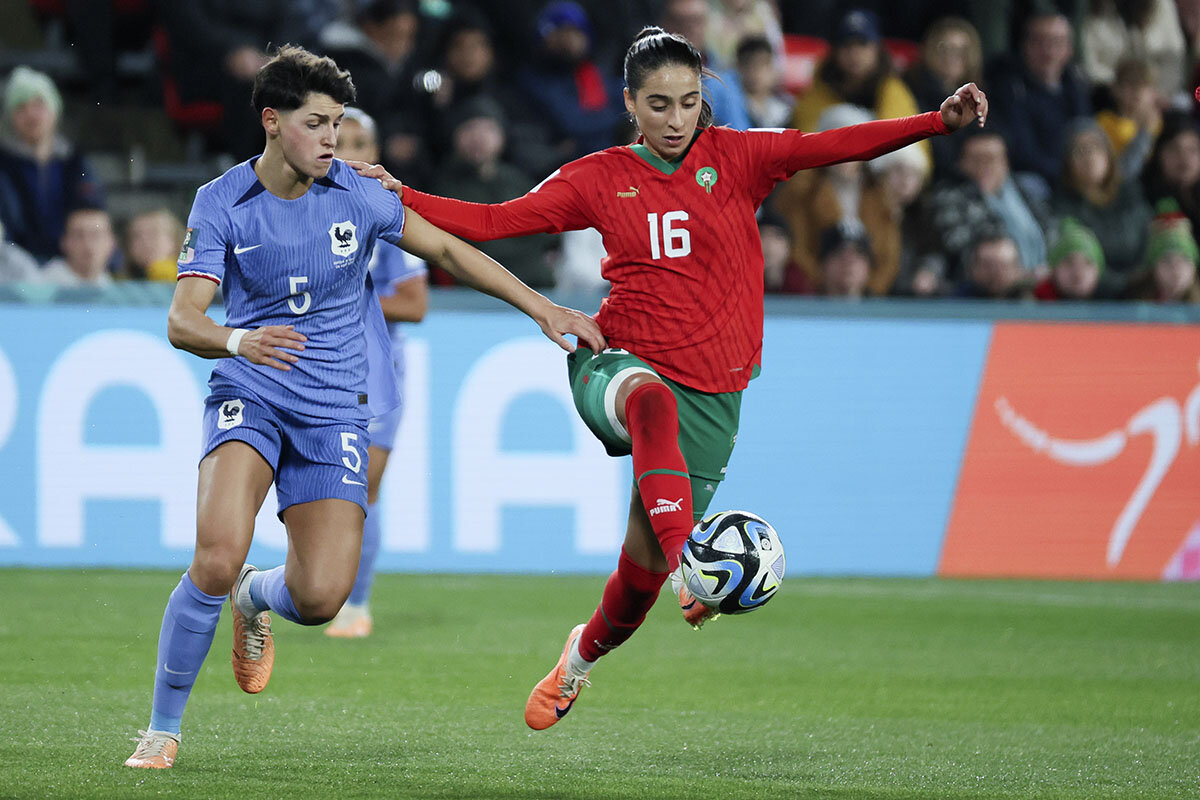African teams break through at Women’s World Cup
| Lusaka, Zambia; and Johannesburg
In Lusaka, the giant chicken is iconic.
As cars spin around a major traffic circle in Zambia’s capital, they are greeted by a towering statue of a white rooster perched in its grassy center, advertising a local poultry company. So beloved is the chicken that when a Lusaka mayor announced a few years ago that it would be torn down, Zambians put up enough of a fight that he eventually backed off.
So it was a striking sign of the times last month to see the famous chicken painted wearing the uniform of Zambia’s women’s national soccer team, with the words “Go Copper Queens” painted on his portly body.
Why We Wrote This
A story focused onAfrica’s women soccer players have shrugged off discrimination and shone at the World Cup, enjoying unexpected successes that have galvanized fans at home.
It was the first time in Zambia’s history that the national team – men or women – had qualified for the soccer World Cup final stages, and a live wire of excitement crackled through the country.
Fans donned the team’s jerseys and clustered in sticky neighborhood taverns for the early morning games, broadcast from Australia and New Zealand. Commentary blared from car radios. At a fancy business hotel, the housekeepers kept the televised games on mute as they cleaned rooms so as not to alert their bosses to their transgression.
“Zambia’s name has just been written on the world map in soccer,” said Delux Sayi, a taxi driver. “It’s a tournament of giants, and it’s a great achievement just to be there.”
But this year the African teams at the Women’s World Cup are no longer content “just to be there.” Three of the continent’s four squads – Nigeria, South Africa, and Morocco – stormed their way into the elimination round, in the process toppling teams long considered better than them, and upsetting the game’s established hierarchies.
Record crowds
“Soccer is everything in South Africa, and these women have made us proud,” said Glady Malubana, a waitress at a restaurant in Soweto, the Johannesburg township that is the pulsing heart of South African soccer. She was watching as her country’s national team, known locally as Banyana Banyana, or “the girls,” battled Italy for a slot in the round of 16 last week.
In the second minute of stoppage time in the second half, the game was still tied 2-2, a result that would knock the South Africans out of the tournament. Then Hildah Magaia threaded a short pass to Chrestinah Thembi Kgatlana, who calmly tapped the ball behind Italy’s goalkeeper. At that moment, no South African team, men’s or women’s, had ever qualified for the knockout stage of a World Cup. Thirteen minutes later, Banyana Banyana did exactly that.
It is a cliché to say women’s soccer has come a long way in the 32 years since the first Women’s World Cup was played in 1991. (In fact, although that tournament would later be known as the first Women’s World Cup, at the time FIFA refused to let it use the World Cup brand. The tournament was instead officially branded as the World Championship for Women’s Football for the M&M’s Cup.)
In those days, Women’s World Cup matches were inexplicably 10 minutes shorter than than men’s, and the eventual champions, the United States, played in hand-me-down jerseys from the country’s men’s team.
During the 2023 tournament, in contrast, more than 1.4 million fans have already crowded into stadiums in Australia and New Zealand – a record figure.
Major professional leagues in Europe, the United States, and China have helped cultivate a new generation of superstars in the women’s game, including African players like Zambia’s Barbra Banda and Nigeria’s Asisat Oshoala.
Unexpected victories, and near misses ...
But women’s teams around the world still struggle to command the same respect as their male counterparts. In the lead-up to this year’s World Cup, for instance, South Africa’s national team boycotted a friendly match with Botswana over a pay dispute; the women were being paid smaller bonuses than the national men’s team, despite better results.
Nigerian players also threatened to boycott their first match after their national federation denied them bonuses.
“I have been very frustrated with the [Nigerian soccer] federation and the lack of support,” Nigerian head coach Randy Waldrum told the “Sounding Off on Soccer” podcast in June. “We have less days than a college preseason to prepare for the World Cup, and it blows my mind.”
At the World Cup itself, however, the African teams have seemed unflustered. Nigeria, South Africa, and Morocco all defeated higher-ranked teams to secure their spots in the knockout round. By chance, all three ended up facing off in round of 16 matches against a nation that had once colonized their country – South Africa against the Netherlands, Nigeria against England, and Morocco against France.
Even Zambia, the lowest-ranked team in the tournament at 77th, stormed to a 3-1 victory over 36th-ranked Costa Rica in its final group match.
There were other victories, too – such as Morocco’s Nouhaila Benzina becoming the first player in soccer history to wear a hijab during a World Cup match.
When Nigeria was finally eliminated 4-2 on penalty kicks in its round of 16 match against England on Monday, defender Ashleigh Plumptre said she hoped the team’s thunderous performance would help tell a new and different story about African women’s soccer.
“I think everybody counted us out against England,” she said in a post-match interview with The Athletic. Instead, the team came within an inch of unseating the European champions on the world’s largest stage. “We made a statement here,” she added. “We won’t be forgotten for what we’ve done, and this will just be the foundation moving forward.”









